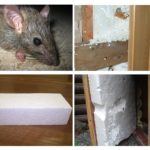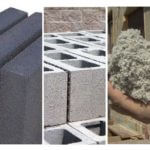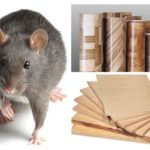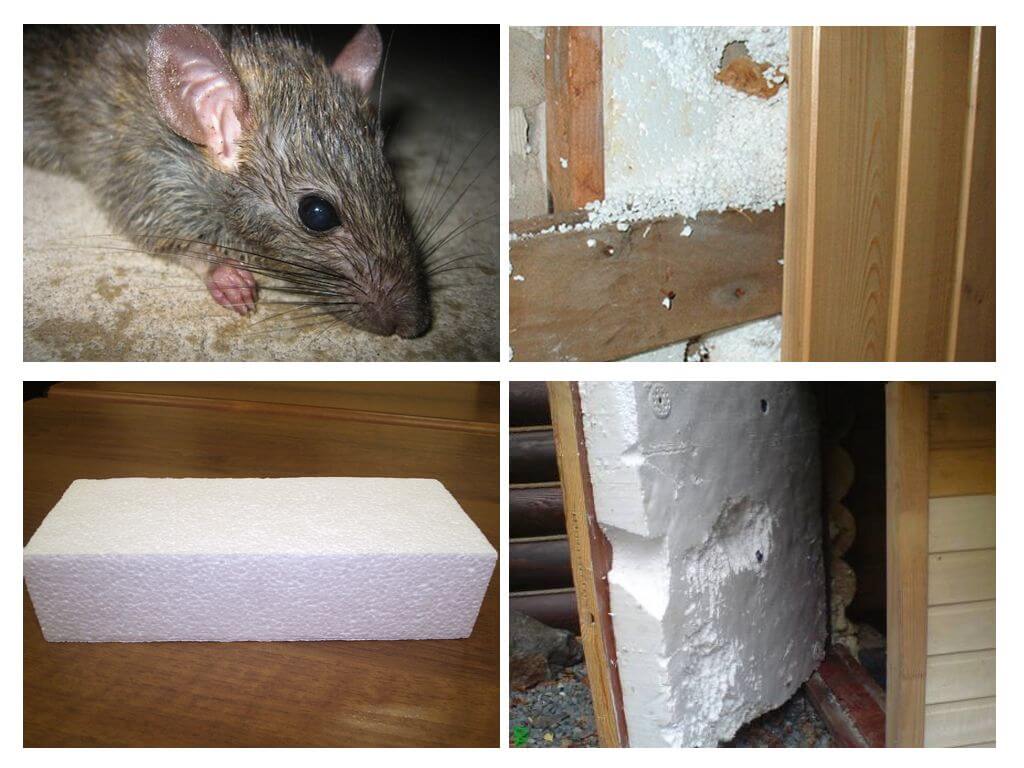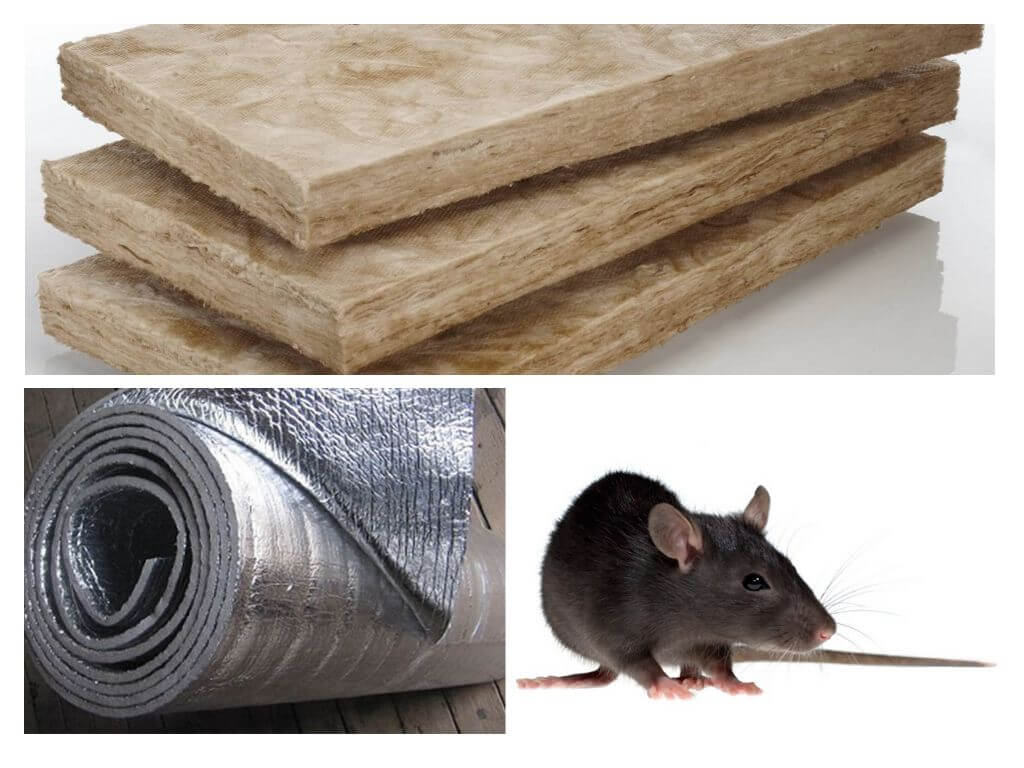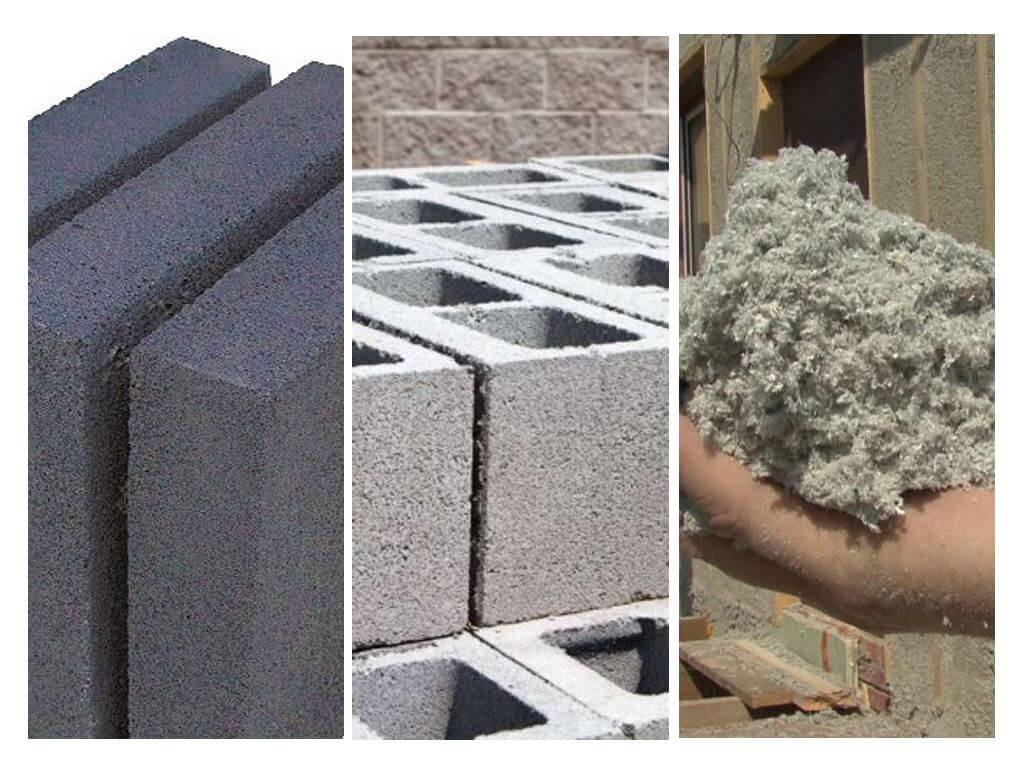What kind of insulation do not eat rats and mice
Content
- Rats and foam
- Insulants that gnaw rats
- Rodent Resistant Materials
- Do rodents gnaw plywood and linoleum
Insulation - a necessary material that is used in the construction of houses, which increases the insulation. Its use reduces the cost of space heating in the winter.In drawing up estimates it is important to consider not only the technical characteristics of the material, but also the attitude of the rodents towards it. Knowing what insulation does not gnaw mice and rats, you can avoid unnecessary repairs in the future.
Whether rodents eat insulation
The structure of the teeth and their characteristics make rodents constantly sharpen their incisors. If animals do not do this, they simply will not be able to open their mouth, as long teeth will interfere. There is one more reason why mice attempt to insulate. Small pieces of material are well suited for arranging a nest for baby rats and mice.
Answering the question what kind of insulation does not eat mice and rats, we can say with confidence that any. Tailed animals a priori can not eat building material. He does not represent for them any nutritional value. They use it only as a "file" for the teeth, to build nests.
On a note!
Rats and mice gnaw brittle insulation, make their moves in it, thereby violating the integrity of the structure.
The favorite insulation rodents
There are a number of heaters that rats gnaw with the greatest desire.
Styrofoam
Polyfoam - one of the most popular heaters. Its main advantages: ease, simplicity of installation, reasonable price. Do not leave it unattended and rodents. Rats and mice do not eat foam, but they are able to gnaw through it, to equip their homes in the cavities near it, in which they will safely inhabit and multiply. Mice literally chop up the material into small pieces, dragging them along their burrows. Special like mice gnawing polystyrene foamwhich is characterized by low density.
Protection of polyfoam can cost more than the building material itself. To prevent infringement of pests, the sheets are covered with a fine metal mesh. It is possible to process foam plastic with copper sulphate or boric acid. To eliminate the holes made by rat or mouse teeth, it is possible with the help of foam.
Of all the types of foam, the sheets with small pores are the most resistant, but this does not mean that they are too tough for mice or rats. Just this material a little longer will maintain its integrity.
On a note!
Lay out poison for rats and mice under the skin - a very risky undertaking.If the death of the animal overtakes directly beneath it, the body will decompose and emit a disgusting smell. Depending on the temperature and humidity level, the process can last several months. To extract stinking corpse will have to dismantle the entire structure.
A type of foam plastic is extruded polystyrene foam. In contrast to the first, it is characterized by increased resistance to moisture. It is used for warming attic, basement. And although the density of the material is higher than that of traditional foam plastic, the mice readily nibble it, although they do not settle in it.
Foamed Polyethylene
The material is a foam cellophane, covered with one or two layers of aluminum foil. It has good thermal insulation, does not allow air, moisture. With it, insulate the walls from the inside. The main drawback is the possibility of the appearance of fungus, mold, as well as complete "helplessness" in front of pests.
Stone wool
Stone wool - fibrous insulation material. It is made from rocks, but most often basalt is used.High-density basalt cotton wool is commonly used for indoor and outdoor home insulation. It is characterized by low thermal conductivity, moisture resistance, drowns out sound waves, does not burn.
According to the manufacturers, special additives were added to the composition and rodents do not gnaw it. However, as evidenced by the reviews, in practice, the situation is different. Mineral wool is occasionally subjected to attacks of pests, they bite it and can even settle in it.
Opinions differ on glass wool. In Soviet times, it was believed that this heater is afraid of rodents and it represents a mortal danger for them. Now you can observe how rats in glass fiber furnish their dwellings and feel great in them. It is not yet possible to establish thoroughly the reasons why animals changed their attitude towards the material. There are two hypotheses. According to one of them, glass wool is produced by another technology and differs in composition from its Soviet predecessor. Another version says that mice and rats have adapted, mutated, and now glass wool no longer scares pests.
Resistant materials
Mostly insulation, in which rodents do not live inorganic origin, has a dense and solid structure.
Expanded clay
One of the most popular building materials, which do not eat mice. It is a light, porous fraction, obtained by roasting fusible clay. It is widely used for basement insulation, floors, roofing. Often used in the arrangement of dry floor screed. This is an environmentally friendly bulk material that does not emit harmful toxic compounds.
On a note!
The sizes of granules vary in the range of 5-45 mm. Even if the mouse gets into such a heater, its movement will be difficult. Before laying the clay, the surface is often covered with cellophane film to ensure reliable waterproofing. Being under a layer of insulation, the rodent will experience a lack of air, and the hardness of the granules will not allow to try them on the tooth.
Ecowool
Another type of insulation that rodents did not like. Ecowool is a relatively new material, the advantages and disadvantages of which cause a lot of controversy. It is made on the basis of cellulose, to which are added special additives, additives that prevent fire.Mineral wool, known for its noise-insulating properties, is less than ecowool by four times. Insulation is applied manually or by means of installations, filling all the gaps and without leaving joints
Ecowool could be an excellent material for rodents in which they would coexist peacefully. But manufacturers have provided a similar scenario and enriched the composition of the heater with antiseptics, one of which is orthoboric acid and boric salts, which provoke dehydration of the rodent's body, asphyxiation and its subsequent death.
Foam glass
The material is presented in bulk or in slabs for the construction of rigid structures. One of the most expensive heaters. The stated lifetime is up to 100 years. It is made of glass waste by foaming with a carbon mixture. As a result, glass cells are formed, tightly adjacent to each other.
Fiberglass has good thermal insulation properties, ease of installation, is not afraid of moisture, the material is absolutely resistant to rodents. Even if the mouse tries to bite through the insulation, it will immediately injure the oral cavity and limit its claims to this.
Foam concrete
The material is lighter in weight than concrete. Technical characteristics are close to aerated concrete. Cellular material is produced in loose form, which is filled with the necessary cavities and in the form of blocks.
On a note!
Despite its shortcomings: it is poorly plastered and is afraid of moisture, which means that if improperly installed, mold may appear, foam concrete is not afraid of rodents. Using this material, you can not worry about the damage that can cause rats and mice.
Plywood
Rodents eat or gnaw plywood; this question also worries people who are planning to insulate a house during the construction or operation of a dwelling. The method of manufacture, the structure of the layers of fiberboard, particleboard, OSB or does not allow mice and rats to cause serious damage to these materials.
The oral apparatus of rodents is adapted to nibble across. In plywood, there is an alternation of longitudinal and transverse layers. Even if the mouse managed to gnaw through the first layer, then the next one becomes an impossible task.
Linoleum
Although linoleum is not included in the list of heaters, however, it is this floor that remains the most popular and popular for arranging and warming the floor.Insulated linoleum can be laid on special substrates, as well as on bare concrete, wooden base. When choosing substrates, it is worthwhile to take snapshots for those that do not attract rodents.
Ways to protect insulation
If the population of rodents began to develop in the heat-insulating layer, then it is necessary to take urgent measures. The following measures will help to protect insulation:
- replace the damaged material with new ones, which is too tough for rodents;
- in the discovered passages, the cavities made by the mice, it is necessary to fill in broken glass, wood chips, which are pretreated with copper sulphate;
- so that rodents do not have an incentive to settle in insulation, they should be ensured that they do not have a power source;
- in order to avoid the penetration of animals from the outside, during the construction phase, crushed glass or loose insulation is poured into the cavities of the floors in the basement, and a strip foundation is arranged along the facade.

